
Using Digital Twins to Track and Simulate Large Systems
For decades, digital twins have played a crucial role in the field of product lifecycle management (PLM), where they assist in the design and testing of many types of devices, from valves to jet engines. ScaleOut Software has pioneered the use of digital twin technology combined with in-memory computing to track the behavior of live systems with many components – such as vehicle fleets, IoT devices, and even people – to monitor status in real time and boost situational awareness for operational managers.
Now, both data analysts and system managers can also harness the power of digital twins to simulate the behaviors of complex systems with thousands of interacting entities. Digital twin simulations can provide invaluable information about complex interactions that are otherwise difficult to study. They can explore scenarios often found in live systems, informing decisions and helping to identify potential issues in the planning phase. They also empower professionals to validate real-time analytics prior to deployment and to make predictions that help manage live systems.
A Case Study: Rail Transportation Safety
Consider an important use case in transportation safety for the U.S. freight railway system. The U.S moves more than 1.6 billion tons of freight over 140,000 miles of track each year. In 2022, there were 1,164 train derailments that caused damage measured in the millions of dollars and cost multiple lives. For example, in February 2023, fifty freight cars derailed in East Palestine, Ohio in a widely publicized accident. How can digital twins help prevent similar emergencies?
Currently, track-side sensors detect mechanical issues that can cause derailments, such as severely overheated wheel bearings, and radio train engineers often too late to prevent an accident. In the Ohio event, the NTSB preliminary report described increasing temperatures reported by three rail-side “hot box” detectors before the accident occurred. The U.S. railway network places these detectors every few miles across the country:
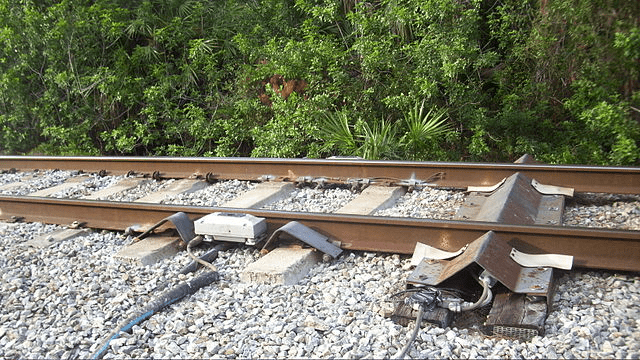
Example of a hot box detector (BBT609 – Own work, CC BY-SA 3.0, https://commons.wikimedia.org/w/index.php?curid=25975512)
Hot box detectors capture the data needed to track increasing wheel bearing temperatures and predict impending derailments. However, safety systems need to harness this data more effectively to prevent these incidents. Digital twins can help.
Real-time analytics using digital twins can combine temperature information from multiple hot boxes to detect anomalies and take action faster, before small problems escalate into derailments. Cloud-hosted analytics can simultaneously track the entire rail network’s rolling stock using a scalable, in-memory computing platform, such as the ScaleOut Digital Twin Streaming Service™, to host digital twins. They can continuously analyze patterns of temperature changes for each car’s wheel bearings, combine this with known information about the rail car, such as its maintenance history, and then assess the likelihood of failure and alert personnel within milliseconds. This use of contextual information also helps prevent false-positive alerts that create costly delays.
Using Digital Twin Simulations to Design and Test Real-Time Analytics
To help railway engineers develop and test new predictive analytics software, large-scale simulations can model the flow of information from the hundreds of thousands of freight cars that cross the U.S. each day, as well as the thousands of detectors placed along the tracks. These simulations can statistically simulate emerging wheel bearing issues to test how well real-time analytics software can detect impending failures before an accident occurs. Digital twins serve double duty here; they implement real-time analytics, and they model wheel bearing failures.
As a proof of concept, ScaleOut Software created a simulation of the U.S. freight rail system to evaluate how well digital twins can track wheel bearing temperatures from multiple hot box detectors and alert engineers to avoid derailments. The simulation runs as a discrete event simulation with digital twins exchanging messages in simulated time to model interactions.
Workload Generator
This workload generator creates 500-1000 simulated trains, each with 100 freight cars and 8 wheel bearings per car. The simulated trains travel on a hypothetical rail map that crisscrosses a hypothetical U.S. rail map with 107 routes between major U.S. cities:
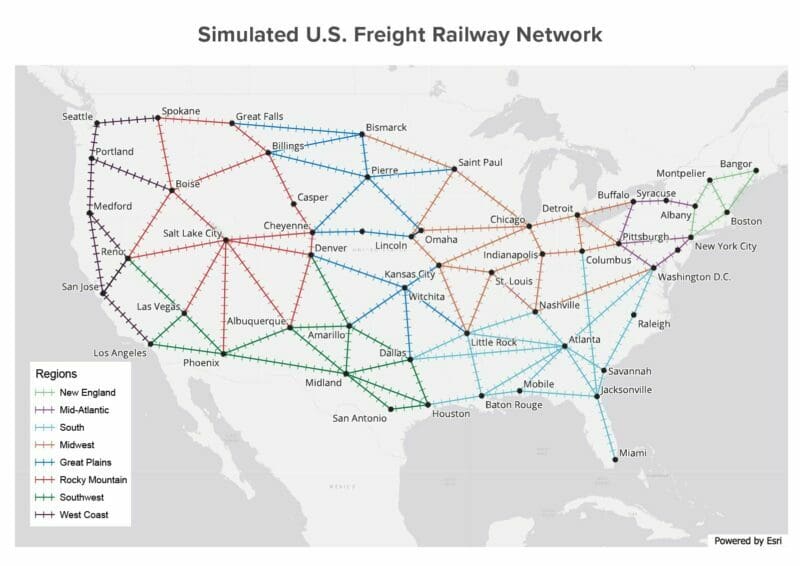
The simulated rail network places 3,800 hot box detectors approximately every 10 miles along the tracks. Each detector’s job is to report the wheel bearing temperatures for every freight car as a train passes it along the route, just as a real hot box detector would.
The simulation uses a separate digital twin model to implement trains and hot box detectors. (Each digital twin model has its own properties and algorithms.) A simulated train keeps track of its route, current position, speed, and freight cars. It also implements a probabilistic model of wheel bearing failures that cause a wheel bearing to enter a deteriorating state with a probability of 1:1M and then increase its temperature over time. As it passes a simulated detector, each train reports the temperature of all wheel bearings to the detector. After a deteriorating wheel bearing passes ten detectors, it increases to a 1:4 probability of entering a failed state with a rapid temperature rise. Once a bearing reaches 500 degrees Fahrenheit, the model considers it to have experienced a catastrophic failure, which corresponds to a fire or derailment.
Here is an example of a wheel bearing’s temperature profile as it passes detectors along the rails:
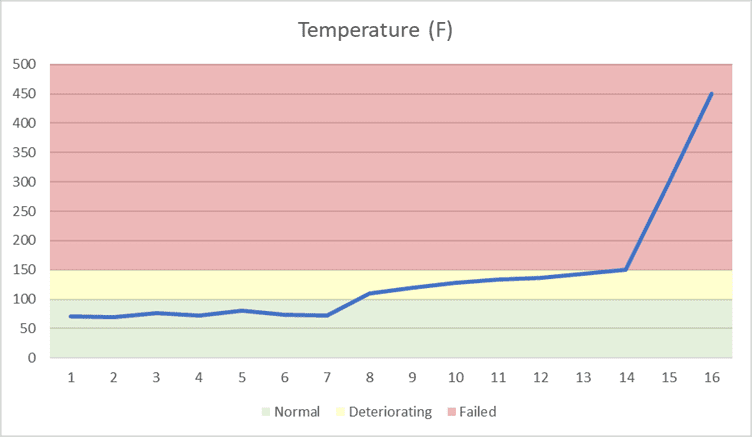
As simulated trains pass hot box detectors and report their wheel bearing temperatures, the detectors send a message to their corresponding real-time digital twins, which capture and analyze this telemetry.
The following diagram shows the simulation’s workload generator made up of digital twins:
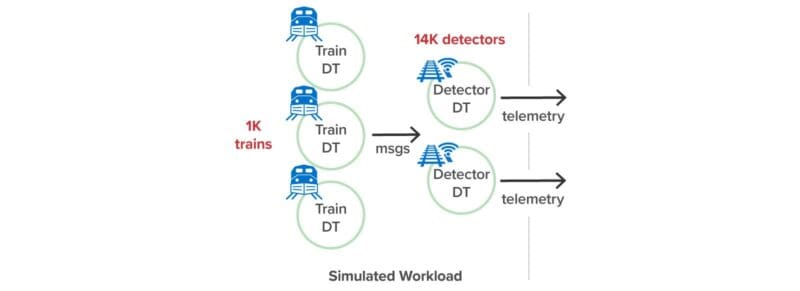
Real-Time Analytics
Digital twins also implement real-time analytics code for detecting wheel bearing failures. Once deployed in a data center for production use, they continuously track telemetry from real hot box detectors to look for possible wheel bearing failures and alert train engineers. In an actual deployment, existing hot box detectors would send messages over the cellular phone system to a cloud-based analytics service instead of just making radio broadcasts to nearby train personnel.
The analytics code uses two digital twin models, one for hot box detectors and another for individual train cars. The hot box detector twins receive telemetry messages from corresponding physical hot boxes along the tracks. Digital twins of train cars track telemetry and other relevant information about all the wheel bearings on each car. They build a picture over time of trends in wheel bearing temperatures reported by multiple detectors. They also can combine a temperature history with other contextual information, such as the type of wheel bearing and its service history, to best decide when a failure might be imminent.
In the simulation, train car digital twins just keep temperature histories for all wheel bearings and look for an upward trend over time. If a digital twin detects a potentially dangerous trend, it sends a message back to the simulated train, instructing it to stop.
To run the simulation, the workload generator sends messages to the real-time analytics: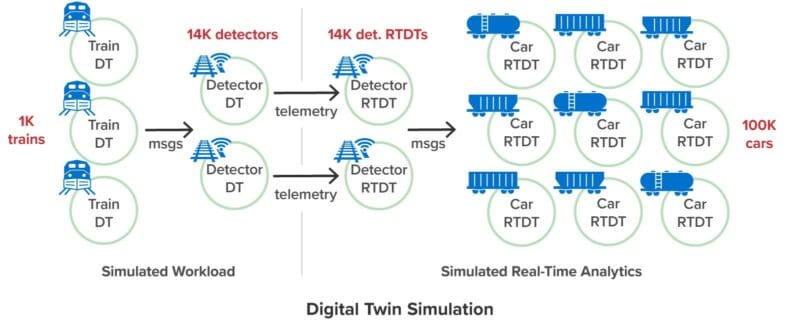
The same analytics twins can receive telemetry from actual hot box detectors after deployment:
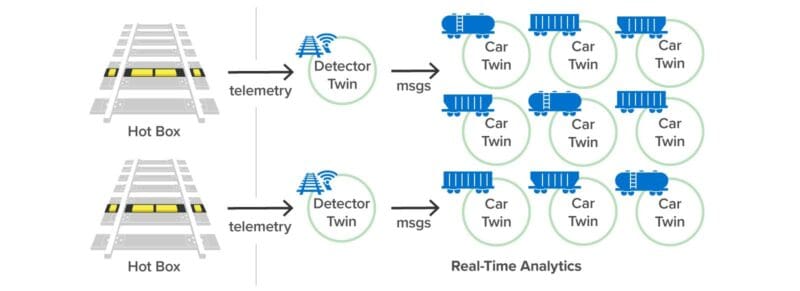
Simulation Results
The simulation divides the U.S. rail network into regions. To check that trend analysis is working, we disable it in the south and southwest and compare it to other regions. The simulation shows that trend analysis catches all deteriorating bearings before they fail and cause derailments. Derailments only occur on routes not performing trend analysis.
The ScaleOut Digital Twin Streaming Service provides tools to visualize these results. The following dashboard widgets track the number of alerted trains by region that are undergoing inspection (because trend analysis detects an issue) along with the number of derailed trains. Note that derailments only occur in the regions with trend analysis disabled:
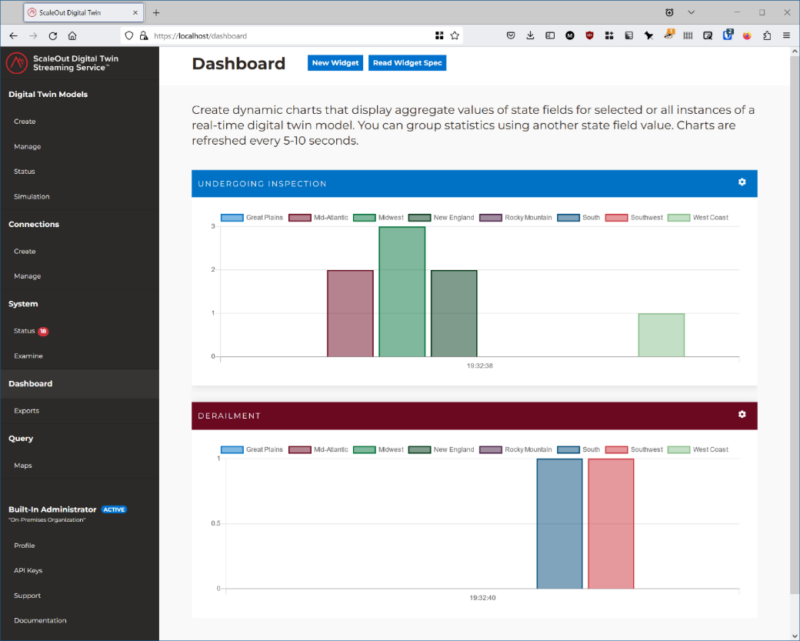
The following geospatial map of a continuous query shows the trains which are running normally in green, undergoing inspection in blue, and derailed in red. This map confirms that all derailed trains are located in the south and southwest regions and shows trains undergoing inspection in other regions:
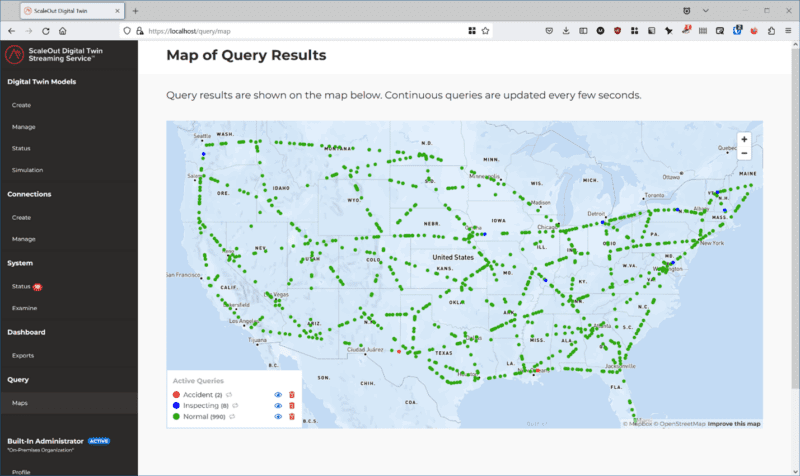
Summing Up
The U.S. freight railways provide the backbone of the country’s freight transport system and must run with minimum disruptions. New technology like digital twins can take advantage of existing infrastructure to provide continuous monitoring that is missing today. Using scalable in-memory computing, digital twins can capture live telemetry throughout the rail system, analyze it in context, and create immediate alerts when needed. They can also implement simulations to model these issues and help planners evaluate real-time analytics software.
Beyond just watching wheel bearings, digital twins can track other areas of the rail system, such as rail intersections and switches, to further boost safety. With this technology, digital twins can help build next-generation safety systems to eliminate dangerous and costly derailments.
